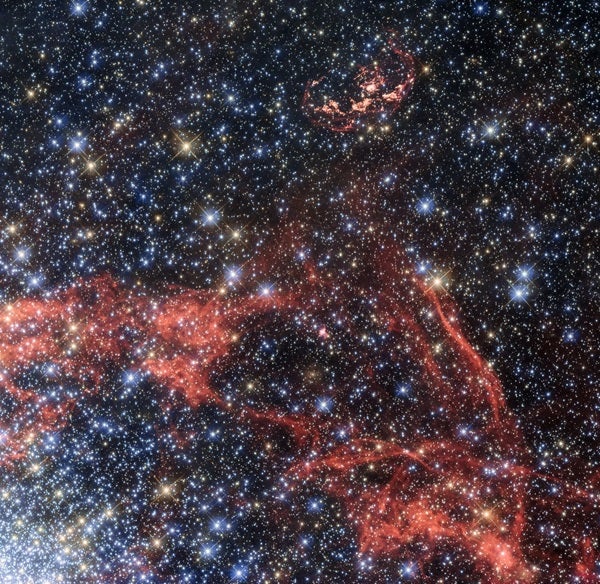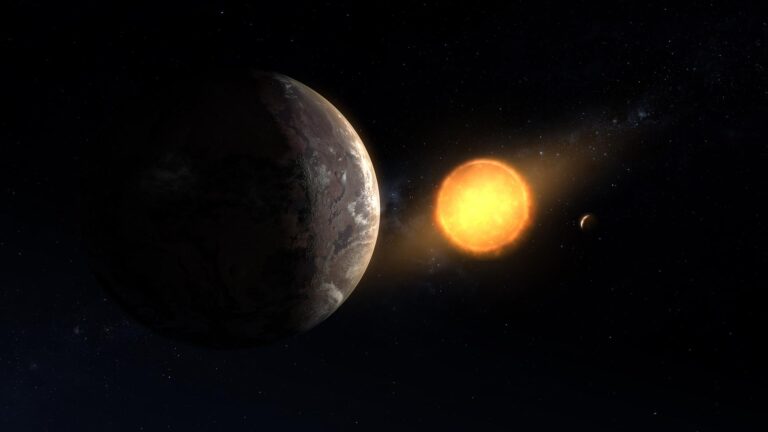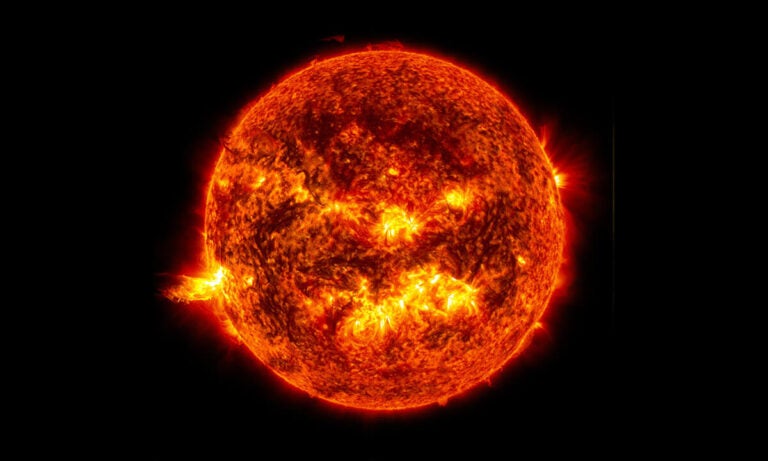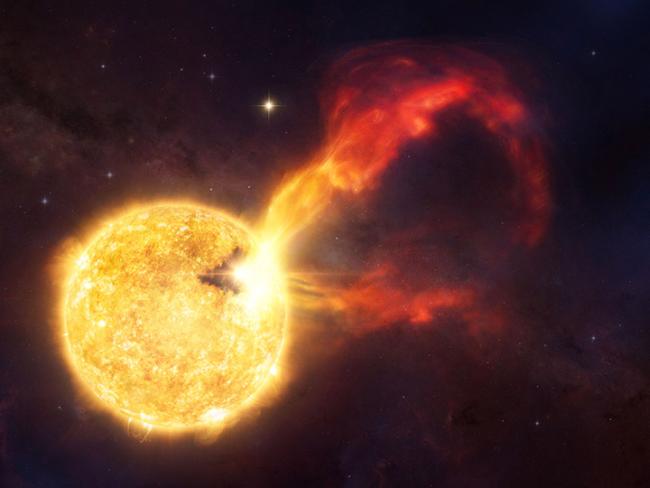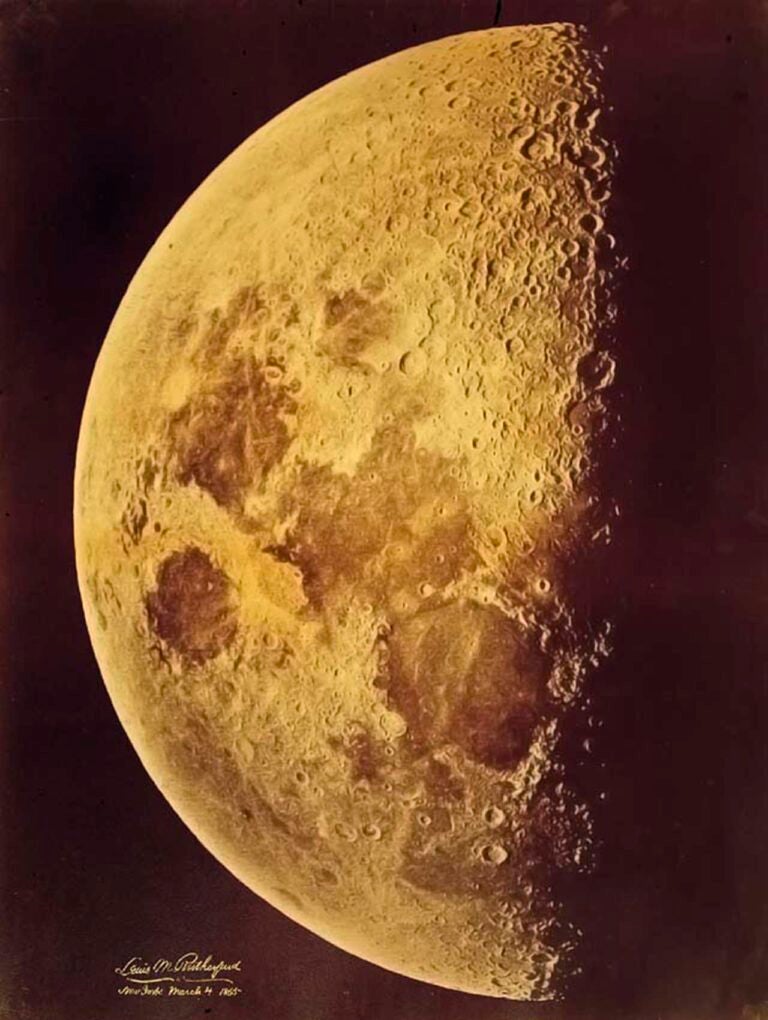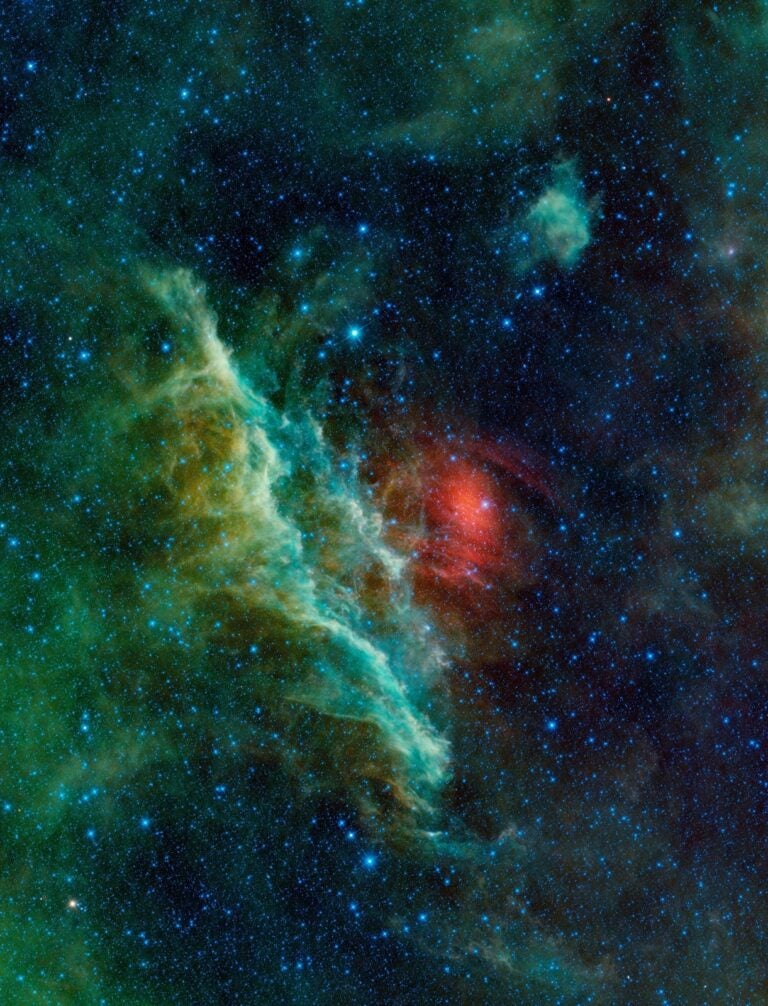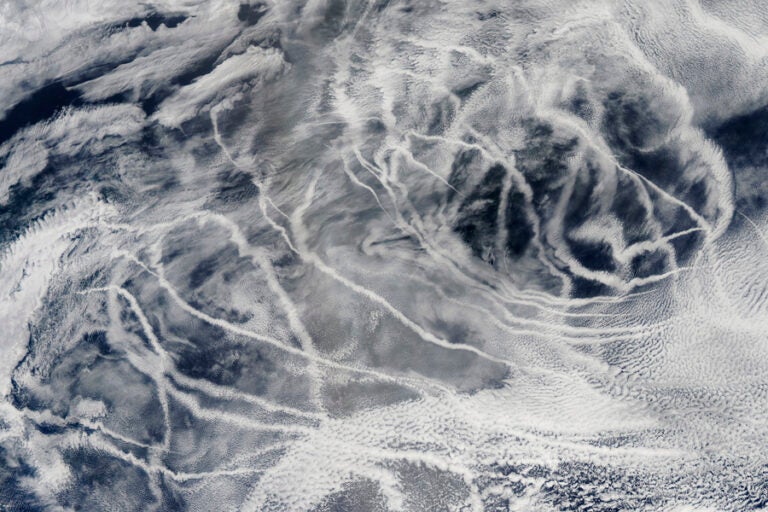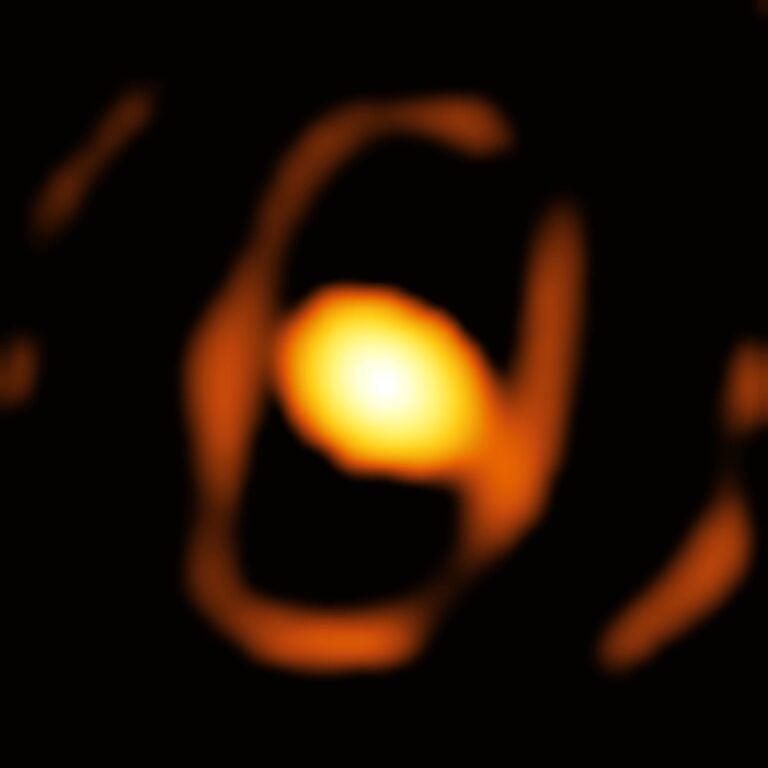Type Ia supernovae are explosions that signify a white dwarf — a type of stellar remnant — meeting its irrevocable end. A recent image obtained with the Hubble Space Telescope (HST) of a Type Ia supernova in the nearby Large Magellanic Cloud (LMC) is now helping astronomers better understand the processes that lead up to such an explosion.
SNR 0509-68.7, also catalogued as N103B, is an unusual Type Ia supernova remnant sitting about 160,000 light-years from earth in one of our satellite galaxies, the LMC. Although most supernova remnants are spherical, N103B is elliptical, likely due to interactions with a dense, dark cloud of dust or gas. Because of its close proximity to Earth, astronomers imaged the remnant with HST to probe further; the images revealed evidence of a star that could be associated with the remnant itself.
What does this mean? Type Ia supernovae are believed to occur only when a white dwarf resides in a binary system. The nature of these binary systems, however, is still unknown. There are currently two competing theories for the cause of Type Ia supernova explosions. One theory requires both stars in the system to be white dwarfs; if these stars get too close and merge, a supernova results. The other theory requires only one star to be a white dwarf, while its companion is a regular fuel-burning star. If the white dwarf pulls material off its companion, the pileup of extra mass onto the stellar remnant causes a runaway fusion reaction that sparks the supernova.
In the second scenario, the companion star, although robbed of some of its mass, could survive. But no such companions have been found near Type Ia supernova remnants — until, possibly, now. The star identified near N103B is a good candidate companion star for several reasons, including its stellar type, its temperature, its brightness, and its distance from the center of the remnant, where the white dwarf exploded. It has a mass roughly equal to that of the Sun, and it’s surrounded by a cloud of hot material that could be a sign of activity in the binary system before the supernova ever occurred.
Although this star is a good candidate for the role of a doomed white dwarf’s companion, it has not yet been definitively confirmed as such. Additional data, including spectroscopic observations to measure its chemical composition, will be needed. If this star was the white dwarf’s companion, though, it would put an end to the debate between the competing Type Ia supernova theories.
Type Ia supernovae are are an integral rung on the astronomical distance ladder used to measure the distance to faraway objects. The better astronomers are able to understand them, the more accurate distance measurements will become, allowing for even more precise mapping of the universe, its history, and its future.

